I will start my blog about machine tools with a story about the types of machine tools. What is a machine tool? This is the mechanism by which various materials or make something.
The first machines appeared before our era. For example, the appearance of the lathe is documented in 650 BC. It was the simplest device with two centers, between which a workpiece was clamped, which was rotated by an apprentice. In the 16th century, machines already had lunette and steel centers. Modern machines have computerized control and complex structure, allow you to perform many precise operations.
All machines can be divided into two broad categories: metalworking machines and woodworking machines. Often the names and functions of metalworking machines and woodworking machines are similar, but the machines themselves have completely different parameters. As you might guess, this is due to the different density of wood and metal. However, there are types of machines that do not intersect. For example, thicknessing machines are not found in metalworking. Today we will talk about types of woodworking machines. In more detail, each type will be considered separately.
Types of woodworking machines:
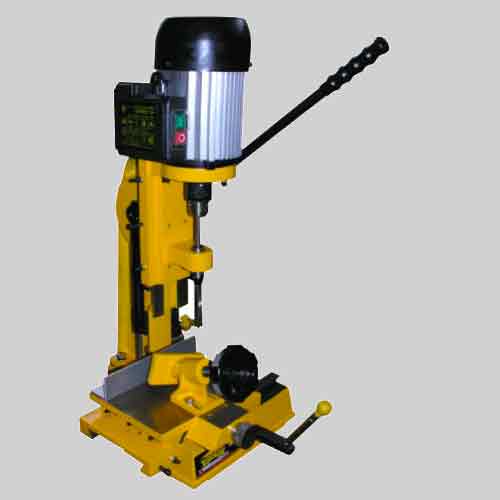
These machines are also called vertical planers, since the movement of the cutter in a slotting machine resembles its movement in cross planers, only in a vertical plane. The grooving machine is designed for the manufacture of grooves, grooves, holes, spikes of various profiles in wood products. Slotting machines are used, for example, in the furniture industry to connect parts with tongue and groove joints.
Combined machines.
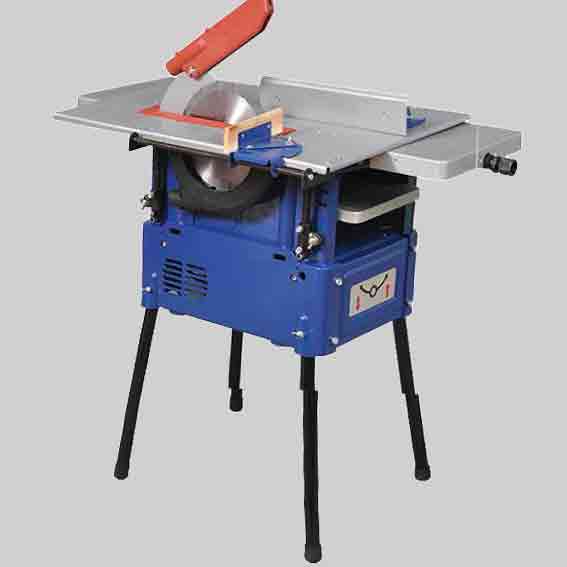
In turn, combined machines can be divided into household and professional. Their difference is primarily in the parameters of the engine, dimensions and supply voltage. For example, most household machines are powered by 220V, and industrial ones by 380V. Combined machines can perform several functions at the same time: sawing, planing, milling, grooving and planing. Usually, household machines can cut and saw.
Edge banding machines
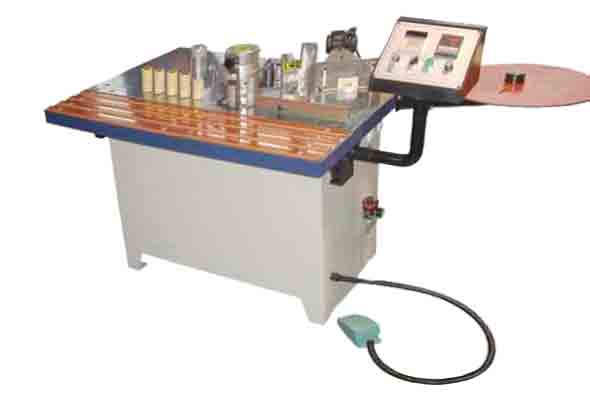
Edge banding machines are designed for facing furniture panels of veneer or PVC materials to give them a finished presentation. There are manual machines, with manual feed of the workpiece, semi-automatic feed and fully automatic.
Round stick machines

Round stick machines are used for the manufacture of sticks different forms. For example, for the manufacture of dowels. The working element is a cutter head, which turns a square workpiece into a conical, cylindrical or cone-shaped workpiece.
Band saws
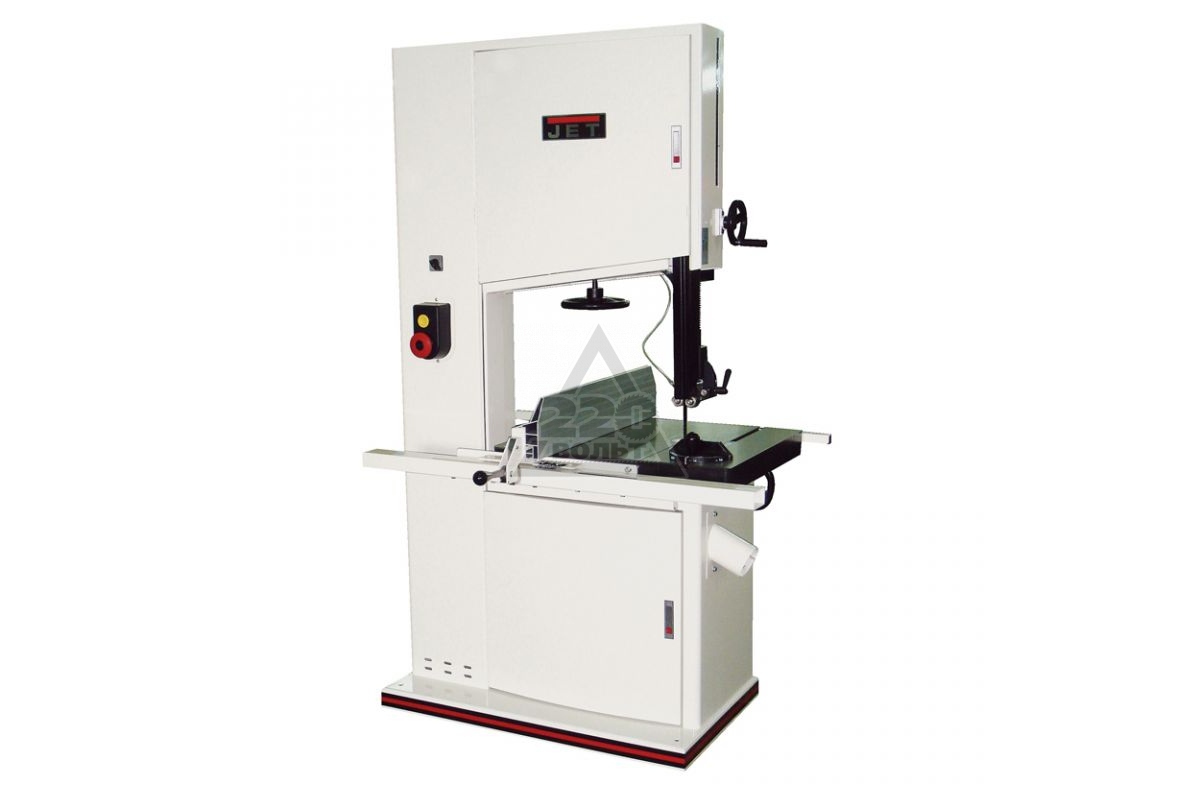
A band saw is a machine whose working element is a band with teeth. The belt moves continuously in a circle supported by several pulleys. The band saw allows you to make very precise, narrow cuts that are often inaccessible circular saws. by type band saws they are divided into pendulum type (in which the saw frame moves along a vertical plane on a hinge), columnar (one or two-column), manual (the saw frame can be fixed stationary, and the workpiece is fed manually. The saw frame can also be movable and move over the table), angular (for cutting the workpiece at the required angle). These machines are also distinguished by automation - manual, semi-automatic and automatic.
Jigsaw machines

Jigsaw machines are designed to perform precise and complex curly cuts. A jigsaw file is used as a working element. This is another type of machine tool that is mostly used in woodworking.
Thicknessing machines
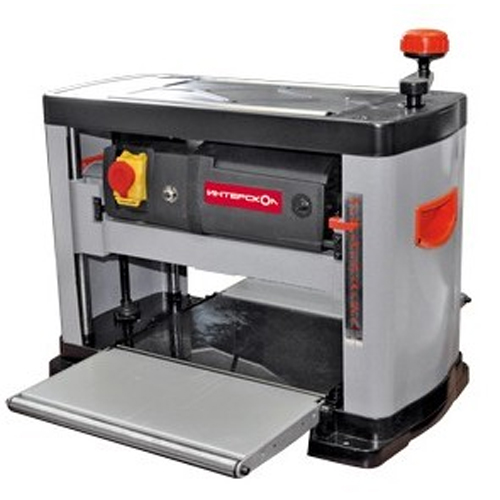
A thickening machine is a machine in which the working element is a shaft with knives. A planer is designed for planing workpieces to the desired thickness. Depending on the model, 1 shaft, or maybe several, can be installed. The workpiece is fed to the working table, where the chips are removed by shafts with knives. The feed can be either automatic or manual. Thickness gauge is used to set the exact thickness of the workpiece.
Drilling machines.
The drilling machine can perform the following functions: drilling, countersinking, threading, countersinking and many others. By type, vertical drilling machines and radial drilling machines are distinguished. Their difference is that in vertical drilling the part moves relative to the spindle, in radial drilling, on the contrary, the spindle moves relative to the part. This allows you to process heavier and more massive parts.
Materials about drilling machines:
Lathes
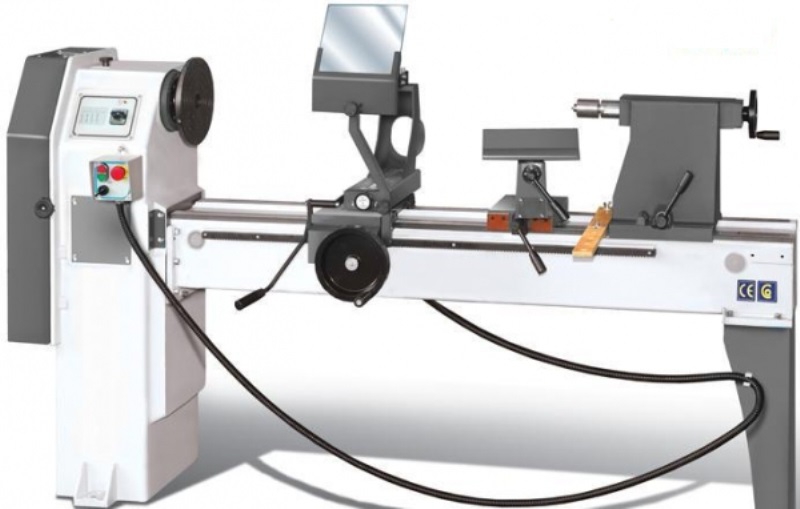
A wood lathe allows you to process wood parts, give them the desired shape, copy parts (using an additional copier). It differs from lathes for metal in a smaller mass, engine power. CNC wood lathes are not very common and are used only in large-scale industries.
Miter saws.
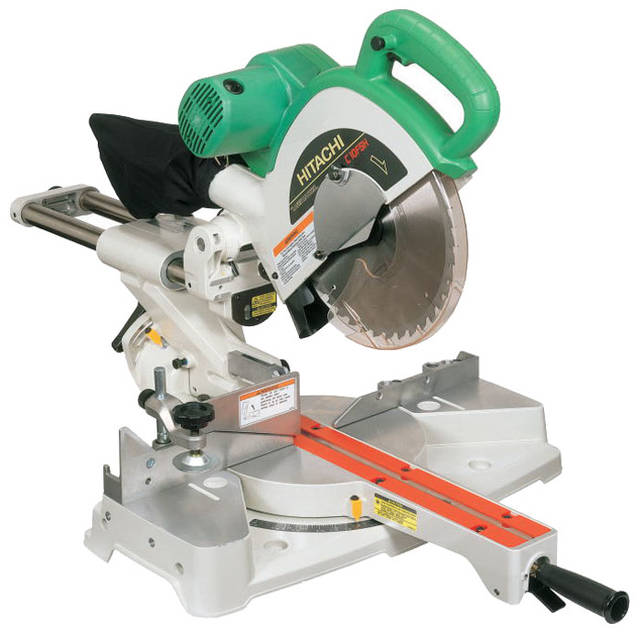
Miter saws allow you to cut workpieces at the required angle. For example, to equalize the ends, which is why they got their name. There are two types: simple and with a broach. For simple ones, the working unit is fixed motionless, and for saws with a broach it moves along guides, which can significantly increase the width of the cut.
Trimming machines
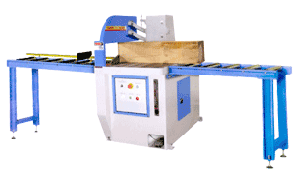
Unlike miter saws, the trimming (end) machine has a more serious design and is used in industries. There are two types of miter saws: single saw and multi saw. A single-saw miter saw is a machine in which the workpiece is fed by a carriage along guides; in a multi-saw machine, the carriage passes between two saws, one of which is rigidly fixed, and the other can be set to the required width.
Panel saws
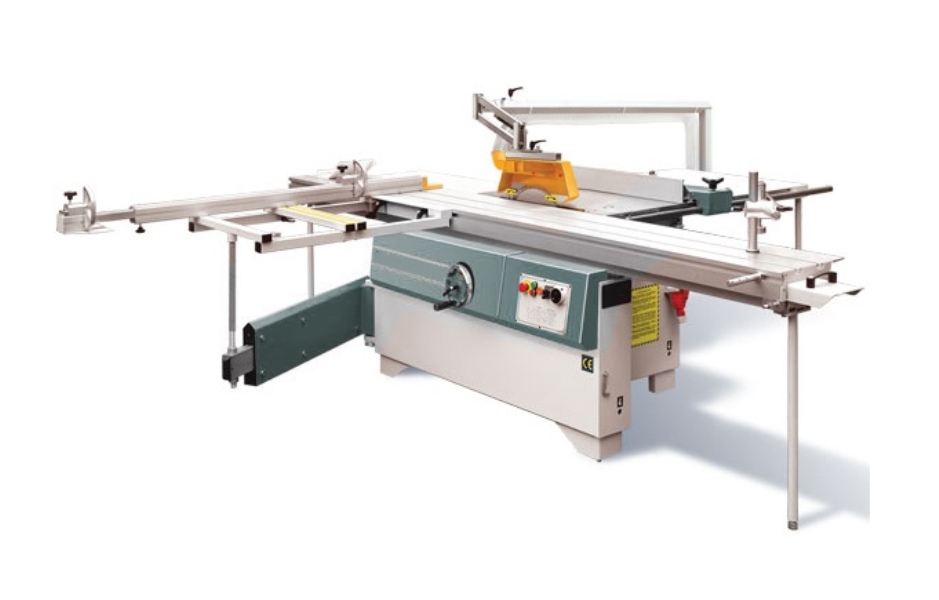
Panel saws are used for sawing at various angles of workpieces and large-sized products. They can cut both longitudinally and transversely. With their help, in the furniture industry, they cut boards and panels made of wood, chipboard, fiberboard, furniture boards.
Milling machines for wood.
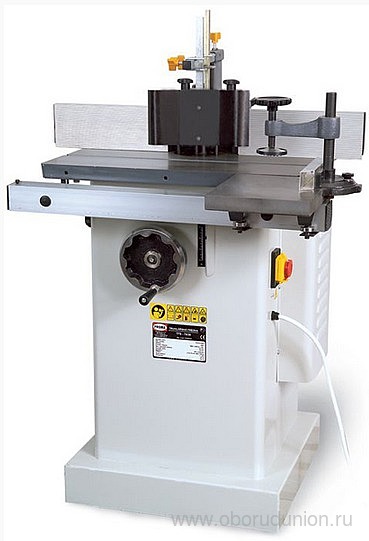
Wood milling machine allows for surface milling, curved milling, profile processing. With their help, windows, doors are made, spikes and eyes are cut. It is used in furniture production, in the manufacture of joinery with a complex profile.
Combined woodworking machines for wood, incl. household are designed for complex processing of parts made of various breeds tree. The following operations are performed on combined machines: * longitudinal, transverse and at an angle sawing with a circular saw; * planing (planing) along the plane and edge, as well as to a given size with mechanical feed of the workpiece;
Advice
Challenge: Where can I find information about wood milling machines? What they are for, how to work with them, etc.
Solution: Wood milling machines are designed for the production of molded wood products and various wood milling operations with manual and automatic feed.
As a rule, wood milling machines are used for the manufacture of skirting boards, panels, cutting simple spikes (using a tenoning carriage), curvilinear milling according to a manual feed template, selecting folds, grooves, ridges, grooving, tongues, slots and cutting out irregular shapes.
DIY
How to make homemade milling machine on wood.
Modern industry provides us with a large selection of a wide variety of woodworking machines. However, having certain knowledge and skills, many of them can be made independently, not inferior in quality to industrial machines. The wood milling machine is no exception. To make a similar machine with your own hands is within the power of a person who knows the basics 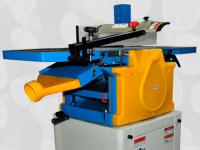 carrying out milling work and having some skills in their implementation.
carrying out milling work and having some skills in their implementation.
For the manufacture of a home-made milling machine for wood, it is necessary to comprehensively solve the issues of creating a supporting structure with a working surface, selecting an electric motor of appropriate power and creating guide systems for bringing the cutter to the surface being processed and guides for moving the workpiece during its processing.
For confident and fast milling wooden blank a homemade wood milling machine needs an electric motor with a power of about 1 kW. To do this, you can use the usual asynchronous motor by connecting it according to the 220 volt circuit. You can use ready-made engines from household appliances or powerful power tools.
A nozzle is attached to the shaft of this engine, into which removable cutters are installed. With this direct fit, there is no need for drive belts, but a high-revving engine should be selected. For uniform rotation of the cutter on the shaft with reverse side the electric motor should be fitted with a massive flywheel.
Desktop
When making a wood milling machine with your own hands, you can use a finished one as a frame and work surface. small table. The frame can be made from metal corners, fixing a sheet of thick plywood on top.
A window is made on top of the working surface for the working part of the cutter and an adjustable guide for moving the workpiece along it. From the bottom of the working surface, under the window for the cutter, the supporting body of the elevator is attached to move the motor with the cutter.
The elevator device allows you to adjust the height of the cutter above the work surface. Inside its body, two guides are installed, a carriage with a fixed engine that slides along these guides, a lifting device and a fixing device.
It is necessary to achieve a rigid fastening of the carriage in the guides to prevent the cutter from staggering. When the lifting device rotates, the carriage with the motor can rise or fall, adjusting the height of the cutter.
A homemade wood milling machine made for a home workshop can be a great help when processing wood products. His specifications can be within the widest limits, depending on the materials used and the accuracy of manufacturing.
Segment turning: general information about woodworking machines.
The wood lathe, unlike its metal-cutting "brother", has long been used (invented by Diodorus Siculus about 2650 years ago) to create crafts, objects, furniture and building details, such as balusters for stairs. Since ancient times, such methods of decorative turning as the displacement of centers of rotation (off-axis turning), the use in combination with 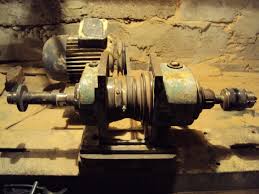 a lathe of a dividing head and a narrow planer (nowadays a milling cutter is used instead) to obtain "twisted" columns or columns with longitudinal grooves.
a lathe of a dividing head and a narrow planer (nowadays a milling cutter is used instead) to obtain "twisted" columns or columns with longitudinal grooves.
The concept of “segment turning” (or turning a workpiece assembled from segments to obtain decorative interior items or furniture parts), apparently, was born in the second half of the 20th century, after the advent of modern adhesives, band saws and belt grinders. (Some experts cite as a counterargument a stone vase from the time of Peter the Great, which has a diameter of about a meter. However, the malachite segments glued to its surface were not sharpened with a cutter, but polished, so this masterpiece cannot be considered a product of segment turning.)
The complexity of segment turning is higher than turning from a solid workpiece: you need to pick up parts, cut them accurately, fit the mating surfaces, and only then screw the faceplate onto the spindle. But this technology has several undeniable advantages, the most important of which is that a segment craft, at least the same vase, looks more beautiful than one carved from a single piece of wood.
Further, segment turning erases the relationship between the dimensions of the workpiece and the final product, while when turning from a single piece of material, the diameter of the craft is rigidly set by the dimensions of the workpiece. In addition, a solid piece of well-dried wood is not so 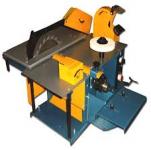 easy to find. Of course, you can rough cut from raw material, dry it, and then turn it completely, but with this method you need to look for a place to store semi-turned crafts. In addition, the weight of a solid workpiece may be too large for a small lathe.
easy to find. Of course, you can rough cut from raw material, dry it, and then turn it completely, but with this method you need to look for a place to store semi-turned crafts. In addition, the weight of a solid workpiece may be too large for a small lathe.
In a segmental way - from boards of relatively small width and thickness, for example, 25x100 mm after sawing them into bars and gluing them - a bowl or vase can be created with a diameter that is limited only by the capabilities of your lathe. At the time of writing this article, I have carved a bowl with a diameter of 300 mm and a height of 200 mm (1), using boards no wider than 80 mm and no thicker than 15-20 mm as blanks. On the English-language Internet, there are photos of bowls with a diameter of up to 600 mm, made from 200-400 segments.
Despite the obviousness of the idea, technologically segmental turning requires great care so that the workpiece does not break during turning or cracks do not appear on the finished craft at the site of glue joints.
Cutting conditions during turning may also differ from the standard ones. The volume of chips removed in this case is less, as is the unbalance of the workpiece. Therefore, according to many Western authors, half the horsepower (350 W) lathe woodworking is quite enough, and most desktop (hobby) machines have such power.
Features of cutting modes are that when turning a workpiece from a bar, the cutter works across the fibers, and the wood fibers are parallel to the axis of rotation. When turning grooves and cavities of vases from solid wood, the cutter cuts the fibers from the end, which is also, in general, across. But with segment turning, the wood fibers in the segments are directed along the main movement (and along the chords to the axis of rotation), so that the work of the cutter is closer to planing with a planer or scraping.
Since the fibers of the tree in the segment are straight, and the chord is turned, half of the segment is sharpened “meeting the fibers”, and half “along the fiber”, so the cutter must be sharpened sharper, and the feed should be done less so as not to chip the tree (the volume of the layer to be removed is all the same for segment turning below).
In my experience, an oblique cutter is not applicable, the main tool for external surfaces is a semicircular one, for ends - a straight one, for internal ones - a flat oval or a special cup boring (3). No need to get carried away with a high speed of rotation - for example, I am quite satisfied with 850 rpm. Among other things, a lower speed is safer in the event of the workpiece breaking and flying out of the machine.
After turning, the craft is polished directly in the machine sandpaper 120 and 400 units, which gives a very smooth surface.
SpecificationsCombined woodworking machines, incl. household are intended for complex processing of details from various breeds of a tree.
Combined woodworking machines perform the following operations:
longitudinal, transverse and at an angle sawing with a circular saw;
planing (planing) along the plane and edge, as well as to a given size with mechanical feed of the workpiece;
thicknessing with automatic feed of the workpiece;
milling surfaces of various configurations (copier on request) and cutting spikes;
drilling and slotting.
Design features of combined woodworking machines
Rigid bed and cast iron tables reduce vibration and ensure high precision for a long time.
The drive of spindles of the combined machine is individual from 3 electric motors.
High quality milling is ensured by a vertical high-speed spindle and clamping system (optional).
For cutting spikes and sawing across the fibers and at an angle on a combined machine, a trimming carriage is used. The saw and milling shafts of the combined machine have the ability to move vertically, and when one is working, the other is retracted to the lowest position and the hole is muffled.
Thickening combined machines with automatic feed through two drive shafts, while the planer tables recline, opening up convenient access to the thicknessing table of the combined machine. The drilling and grooving table provides movement: in a horizontal plane in any direction with the help of a system of levers and vertically - with a screw with a handwheel and a handle. For safe work the combined machine is equipped with protective devices and guards: protective covers have branch pipes for connecting chip extractors. The combined woodworking machine is equipped with eccentric clamps, guide rulers and a universal cutting tool.
Fraser: School of Masters.
Milling - cutting of metals and non-metallic materials, in which the cutting tool - milling cutter - has a rotational motion, and the workpiece being processed - translational. It is used for processing planes, curvilinear ![]() surfaces of parts, threaded surfaces, teeth of gears and worm wheels, etc. It is carried out on milling machines ...
surfaces of parts, threaded surfaces, teeth of gears and worm wheels, etc. It is carried out on milling machines ...
This definition is given by the Polytechnic Dictionary (Moscow, "Soviet Encyclopedia", 1989). It clearly requires additions, because the possibility of milling is not mentioned at all. hand power tools. It is to her that our article is devoted.
Start with the fact that manual routers there are different types: edge, rod, rodless and simply specialized, for example, for inserting door locks or window frames. Let us dwell in detail on the most universal and, as a result, the most popular - rod. Such a tool consists of two parts: the upper one, which includes the motor, handles, collet clamp, vertical position clamps, and the lower one - with rods, support sole and turret stop. Machines of this variety are distinguished by the fact that they allow you to dive into the material being processed to the required (within the limits of possibilities) depth. Using examples of specific operations, we will consider important design features of modern devices of this type.
GETTING READY FOR WORK
Let's start with the basics - preparation for work. Depending on the material and the task, a cutter is selected. For soft woods, plywood, MDF and aluminum, a nozzle with high-speed steel (HSS) knives is used, and more expensive, accurate and resistant, with carbide blades (HM) is not forbidden. In other cases - chipboard, hardwood, composite compositions such as artificial marble and the like - the use of NM is mandatory. As already mentioned, one of the important features of carbide blades is precision: they leave a cleaner surface.
Depending on the diameter of the cutter and the material, the speed is set. Since the adjusting wheel is usually marked in 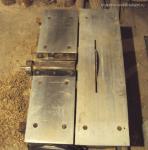 conventional units, you will have to use the instructions, where they indicate when what needs to be set. Generally speaking, setting the speed is a very responsible procedure. First, snap large diameter may not withstand too high speed, secondly, it is important to choose the right mode. With an overestimated frequency, there is a risk of "burning" the workpiece, with an underestimated one, productivity drops and the quality of processing deteriorates.
conventional units, you will have to use the instructions, where they indicate when what needs to be set. Generally speaking, setting the speed is a very responsible procedure. First, snap large diameter may not withstand too high speed, secondly, it is important to choose the right mode. With an overestimated frequency, there is a risk of "burning" the workpiece, with an underestimated one, productivity drops and the quality of processing deteriorates.
Having decided on the speed and type of cutter, install the equipment. The risks on the shank will help to do this correctly - you need to focus on them. If you need to deviate from the order (or it simply did not turn out), they use simple rule- fix 2/3-3/4 of the total length of the shank.
When buying a "consumable", it is important to remember that the clamp diameters are different. Usually there are collets for a shank of 6, 8 or 12 mm. Can't find a tool right size, you should not be sad - just change the collet. It is an insert located inside the hollow drive shaft and fixed with a nut.
So, it's time to clamp the cutter. Do this with an open-end wrench, after securing the shaft. In simpler models, you will need a second key, in mid-level tools there is a stop button, but the most convenient latch is also equipped with a “ratchet” - in this case, you don’t even have to intercept it.
1. The cutter is clamped into the collet using an open-end wrench and a shaft lock mechanism. If the latter is not provided, you will need a second key. In this case, the installation is utterly simplified - the stopper is equipped with a switchable (unscrewing / screwing) “ratchet”. The cutter is clamped, guided by the markings on it or based on general rule(2/3-3/4 shank length).
2. The "head" of the tool is lowered to the stop with a cutter into the surface, after which it is convenient to fix it. Further, based on the overhang of the cutting tool and the desired depth of processing, choose the lowest of the suitable "legs" of the turret. This allows you to pass the workpiece in several stages, without repeating fine adjustments. Often the position of each "leg" can be adjusted within a small range. A support rod is lowered onto the selected “stand”, having previously released its clamp. Without fixing it, but only pressing it with a finger, move the movable pointer along it, achieving its coincidence with the zero of the measuring ruler.
FELDER-GROUP woodworking machines are the result of 50 years of experience in the machine tool industry.
Tradition
Innovation
With many patents, high-quality products and innovative solutions, the Felder-Group is a leading manufacturer of standard woodworking machines. We know what requirements are placed on woodworking machines and fulfill these requirements when designing machines.
Perfection
High quality Felder machines with the best price-performance ratio! This is facilitated by high-precision production processes, strict quality control of products, ongoing training and retraining of workers. You, as a customer and user, benefit from excellent quality and durability from our machines.
Risk free solution
Felder-Group woodworking machines are designed specifically for your requirements and needs. Power, precision and versatility, optimal working comfort, excellent solutions and solid results will satisfy the highest demands you can place on woodworking machines.
A woodworking machine is a working machine on which parts are made and products are processed from wood and wood-based materials of the required shapes, sizes and processing accuracy. Distinguish between machines general purpose(universal) and special (narrow purpose).
According to the method of wood processing, woodworking machines are divided into circular saws, band saws, longitudinal milling machines (joint, planer and four-sided), milling, tenoning, drilling, drilling and grooving, slotting, grinding, combined.
The woodworking machine has motor, transmission and actuator mechanisms. Motor mechanisms include electric, hydraulic and pneumatic drives that provide movement (work) of actuators (cutting and feeding). Transmission mechanisms transmit movement from motor to actuators.
The device of woodworking machines depends on their purpose. At different device they have a number structural elements the same purpose: a frame, a table, a drive, feed and cutting mechanisms, controls, control devices, protective fences, which facilitates their manufacture, operation and repair. Elements of machine tools are divided into main and auxiliary.
Types and arrangement of woodworking machines
The main elements of machine tools provide processing (cutting) and supply of materials and workpieces to the cutting tool or to them. Auxiliary elements of machine tools include devices for sharpening cutting tools, settings, lubrication, waste disposal. All elements are attached to the frame (base) of the machine.
Cutting mechanisms (shafts, spindles, chucks) are used to install and fasten cutting tools (saws, cutter heads, cutters, drills). Such mechanisms are placed on calipers, which are movable and fixed. To feed the material or workpiece into the machine, tables, guide rulers, squares, stops, clamps and other devices are used.
Protective barriers and safety devices are in the form of caps, casings, covers, fan guards. These elements protect the machine operator from accidental contact with the rotating and translational mechanisms of the machine. The guards are interlocked with the machine drive and when they are unlocked, shifted or removed, the machine does not start working. Fences can serve as receivers for an exhauster system (pipelines) to remove wood waste (sawdust, shavings, dust) from machine tools.
The machine controls are buttons, handles, handwheels, pedals. In machines with numerical program management(CNC) a keyboard block is provided for entering the necessary data, and information about the process and processing accuracy is displayed using a digital device or display.
According to the degree of mechanization and automation, machine tools are semi-mechanized, mechanized, semi-automatic and automatic. In semi-mechanized machines, the process of processing a material or workpiece is mechanized, and their supply to the cutting tool is manual. In mechanized machines, the processes of supplying material or workpieces and their processing are mechanized, but there is no automation. Semi-automatic machines have an automated set of work operations only within one processing cycle, and automatic machines - all work operations.
Modern automatic machines and lines are programmed and controlled by electronic computers (computers).
Circular saws
Circular saws are used for cutting into blanks of lumber (boards and bars), plywood and wood boards. The cutting tool of such machines are steel circular (circular) saws. For transverse sawing (across the wood fibers) of boards and bars into blanks (segments), cross-cutting machines are used: hinged pendulum TsME-ZA AND with rectilinear movement of the TsPA-40 saw support. On machines, positional processing is performed when a rotating circular saw. For finishing trimming of workpieces, two-saw trimmers Ts2K12-1, Ts2K20-1, Ts2K12F-1, Ts2K20F-1 are used.
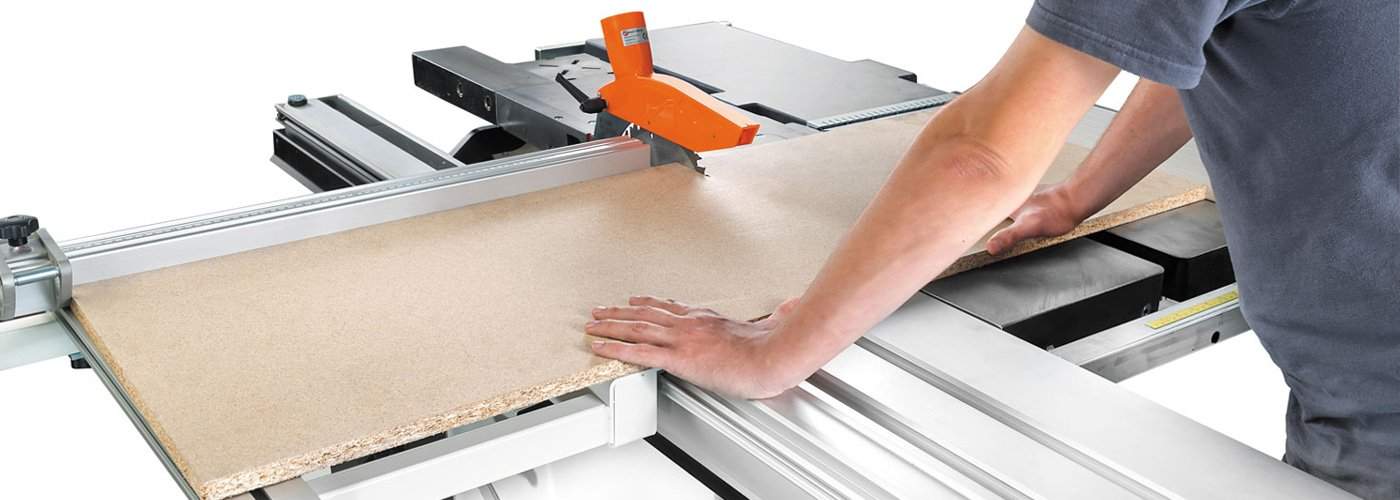
Is it possible to arrange a real carpentry workshop if you do not have a spacious room? At first glance, it seems to be impossible. After all, you need somewhere to place a whole lot of woodworking machines: planer, planer, milling, turning and others. But technology is advancing by leaps and bounds. And today, modern technical innovations make it possible to do this almost trick. In a small closet, room, veranda, you can make a carpentry workshop or a mini-workshop. All it takes is one simple and sure step. Should be purchased by wood.
Combined woodworking machines are indispensable equipment in the production of furniture, windows, doors.
How to choose a multifunctional woodworking machine with the right functions is an important question. After all, in appearance, all universal machines are similar. But their functionality can be very different. Therefore, carefully read the characteristics of the model in technical passport. There is always a list of operations that the multifunctional machine performs.
ADVANTAGES OF A MULTIFUNCTIONAL MACHINE
The multifunctional woodworking machine is an innovative device. It makes it possible to simultaneously implement the main methods of wood processing. On such a combined machine, you can process the workpiece from start to finish. The process begins with planing and jointing. Then, without removing the workpiece, you align its sides - a thickness gauge. Next choose desired operations. This and milling - the separation of chips by rotating cutters. And drilling - getting cylindrical holes with a drill.

Modern multifunctional woodworking machines from leading brands, in addition to the main functions, also perform many others. Their range is wide and varied. For example, chiselling. This is the receipt of recesses, nests, eyes on the workpiece. The calibration function is also popular and in demand. Moreover, its various types. Milling can also be different: figured, groove removal, chamfer milling.
Most multi-functional machines have a built-in function for sharpening tools and saws using the break-in method.
The decision to buy a multifunctional woodworking machine will bring you the following bonuses:
- Saving space in the workshop. The combined machine takes up space for one and works for five.
- Saving money. One universal machine costs less than five highly functional ones.
- Saving time and effort. The workpiece does not need to be removed, dragged around the workshop and inserted into the next machine. All functions are done on one machine.
We have prepared tips for you on how to choose a combined woodworking machine, focusing on some of its features.
CHOOSE BY POWER
When choosing a multifunctional woodworking machine, the main technical parameter- power. It depends on what maximum loads the machine can withstand. In this regard, universal machines are divided into: bdomestic and semi-professional.
Professional.
The first group of machines is characterized by engine power up to 2.2 kW. It also includes small machines for private workshops. They can be low power, ranging from 450 W to 1 kW. Their execution - desktop type. They are less productive, but compact and quiet. Due to the ease of use, such machines are in demand among home craftsmen. Semi-professional machines are often installed on a welded (not cast) frame.
Professional multifunctional woodworking machines are presented in a stationary version. They are equipped with a reinforced cast iron frame and large ground tables. Distinctive feature- high power, above 2.2 kW. And also - massiveness and large dimensions. It is stable, very productive. Withstand extreme loads. The power supply is mainly three-phase, from a 380V network.
Operations in progress
Multifunctionality means that the machine performs at least two functions. For example, a jointer-thickness machine for wood makes jointing and thicknesser. It also belongs to the category of universal. It is more profitable to buy a combined woodworking machine that is capable of performing five to seven or more different processes.
Functionality has nothing to do with the power of the machine. Less power and productivity does not mean that the functionality of the machine is lower.

Household semi-professional combined machines equipped with the same set of functions as very powerful stationary devices. They, depending on the model, may have a thickness gauge, milling, slotting function, sliding carriage, etc. The most popular models of household universal machines are those that perform various milling plus the function of sawing and grinding.
Expensive powerful models perform all sorts of functions. There may be about ten of them. This is planing, sawing, jointing, surface gage, milling work, drilling, slotting, calibration. They have additional options installed: tool sharpening, studding, quarter selection.
Function parameters
Planing, sawing and sizing parameters are different for different models machine tools. When choosing a combined woodworking machine, you should focus on the size of the workpieces with which you will work. If the machine has a sliding carriage, then its desktop will increase. This will make it possible to work with longer workpieces. The maximum and minimum workpiece widths are always specified in the technical documentation of the machine.
Also pay attention to the characteristics of the main functions:
- Maximum cutting depth;
- Width and depth of planing;
- Maximum drilling depth;
- The width and depth of the calibration and the size of the blanks that can be used for calibration.
An important parameter is the feed rate of the workpiece during planing and sizing. The larger it is, the higher the performance from the tank. The feed rate is measured in meters per minute. Depends on engine power. Therefore, it is higher professional models machine tools.
WHAT IS THE WORKING EQUIPMENT
Depending on the functions that the universal machine performs, it is equipped with:
- planer shaft with knives . The dimensions and shape of the shaft are important when planing and thicknessing. Knives can be 3-4. The more of them, the faster the machine cuts. The best cutting shaft today is HELICAL. It is equipped with multidirectional teeth for chip cutting.
- saw blade . He does the sawing. Should be well sharpened and securely fastened. For safety, the disc is covered with a casing. Diameter saw blade affects performance. The increased diameter speeds up the sawing process.
- Frezoy . Blades also come in different diameters. The larger the diameter, the larger may be a preparation. The speed of work also increases.
- drill : Drill size determines drilling depth.

The cutting equipment of a quality multifunctional machine is made of carbon steel.In addition, pay attention to whether there is a sawdust removal system. If sawdust from planing clogs the machine, then the performance of all other functions will be of poor quality.
NUMBER OF ELECTRIC MOTORS
Multifunctional woodworking machines are mainly equipped with a simple asynchronous motor. The drive is the most reliable - belt, it produces little noise. Often, two electric motors are installed on powerful models of combined machines. Two electric motors allow nodes (for example, sawing and milling) to work independently. The power of each engine goes to one function, this reduces the load on it and increases the resource. The switch is located on the control panel
Choosing the right multifunctional woodworking machine means choosing the best option for your production or home workshop. The above tips will help you here. Feedback from users and carpentry professionals is also very important. They will help you decide which multifunctional woodworking machine is best.











How to understand: will the kitten be fluffy?
What kind of light alcohol can be drunk for pregnant women: the consequences of drinking
Why do the legs swell in the ankles and ankles of the feet in pregnant women: causes and methods of treatment
The wedding of Prince Harry and Meghan Markle: scandalous and secret details of the marriage (photo) The future marriage of Prince Harry year NTV
How to close white plums for the winter